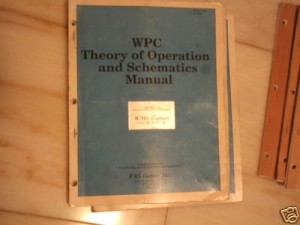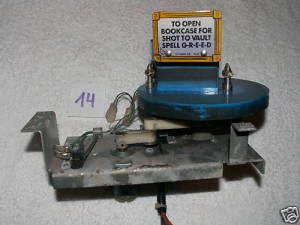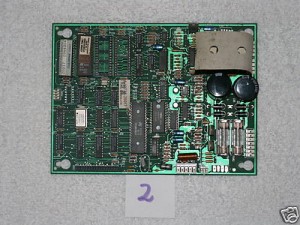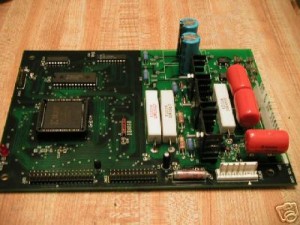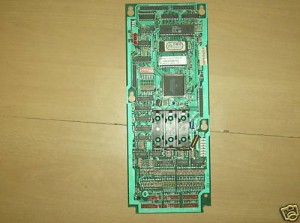Well I just got fed up of not being able to hit the left ramp. Almost all my shots from the upper right flipper would only make it half-way up the ramp and then fall frustratingly back down the ramp (running more-often-than-not right into the swamp). Only every now and then (with the pinball travelling at an increased speed and being very close to the flipper) could I actually succeed in completing the left ramp. So the possibility of completing the THING lights during a single game (even with 5 pinballs) was impossible (although as I don’t have Thing’s hand installed at the moment, that’s not such a great loss).
So, could I do anything about it? Well looking at the flipper mechanism, everything seemed to be OK; the flipper was adjusted correctly (having done this myself previously) and the plunger moved freely inside the coil. So was the problem with the electronics maybe?
Following my experience with the power board, where I made so many updates to the power board in order to improve the performance of the flashers, but where the problem was purely mechanical (a bad contact in a connector) I decided to take a look at the mechanics of the flipper first.
So it was off to Clay’s Pinball Repair web pages (an indespensible resource) to read up about rebuilding flippers.
I decided to do a quick and dirty disassembly of the flipper. So having loosened the “pawl”, so that I could slide off the crank link assembly from the spindle of the flipper and having detached the spring from the metal base bracket on the bottom of the playfield, I unscrewed the two coil supports from the metal bracket in order to free the coil assembly and the crank link assembly together. Once removed from the metal bracket, the coil assembly and crank link assembly could be easily separated.

Upper Right Flipper Crank Assembly
The coil assembly was interesting. This consisted of the coil itself, a metal bracket on one end and an end stop on the other, all as a single unit. Try as I might, I could not separate the two metal brackets from the coil – and I didn’t want to force them apart. However, from everything I had read on the internet and even the drawings of the flipper assembly in the official Addams Family Operations Manual these should be separate parts. Time for a little brute force….
I started with the end stop and used a screwdriver to slowly prise the bracket off of the coil. Eventually I was able to remove the end stop and it was then that I noticed what the problem had been: the end stop had actually mushroomed out so that it was cutting into the coil tubing within the coil and therefore had been difficult to remove. On close inspection of the shaft of the crank link assembly, this also had mushroomed out. Could this have been my problem all along?
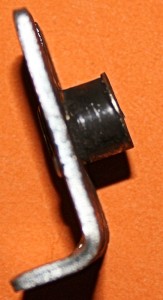
Flared out end stop
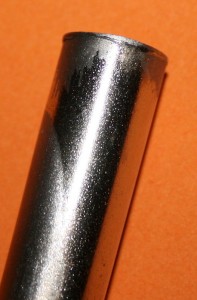
Flared out end of the flipper shaft
Despite the fact that Clay recommends to replace such parts with new pieces, I decide to repair them (basically to see if this was the problem) and so used my new Dremel-equivalent tool to grind down the flaring on both metal pieces:
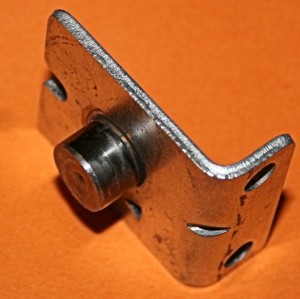
Reworked end stop
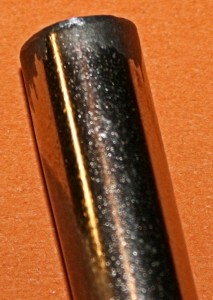
Reworked shaft
It was then time to replace the coil tubing (I had already bought four teflon coil tubes for each of the flipper coils). To insert a tube into the coil required the old (now mis-shapen) metal one to be removed. Unfortunately, this wasn’t easy, as the tubing was stuck in the coil. Fortunately, having taken off the metal bracket at the cable end of the coil, a few millimeters of tubing were left jutting out of the coil. Using a hammer, I hammered this end into the coil, dislodging the tubing from its resting position. This didn’t help a lot, as the tubing was still stuck inside the coil, refusing to budge any further. However, enough of the tubing was now exposed at the other end to enable me to forcefully pull the metal tubing out of the coil with a pair of pliers. In order to do this, however, requires a firm grip of the coil, without damaging it (I managed to remove the outer coil paper in the process, but didn’t harm the wire, fortunately).
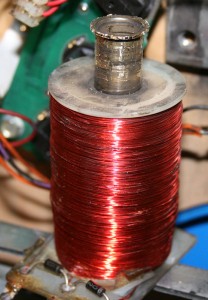
In the process of removing the original tubing. This was harder than it looks!
Having removed the old coil tubing, the new one just slipped into place quite easily and both the end stop and plunger shaft also moved freely inside the new coil tubing. Wonderful.
Before rebuilding the flipper, I decided to clean all the parts. I used metal polish on all the metal parts and Novus 2 on the plastic parts (including the flipper head, which came up nice and shiny). I also removed the plastic flipper bushing to clean this both inside and out. Don’t be fooled (like I was) that this bushing is simply removed by screwing out the three screws. Behind the bushing are three corresponding nuts.
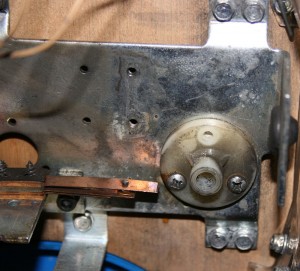
The flipper bushing is secured to the metal base with screws AND NUTS)
Of course I realised this too late and had to take off the entire metal base in order to remount the bushing properly. So I took this opportunity to clean the metal base also.
It was now just a case of rebuilding the flipper assembly. This was quite easy really, with the hardest part being to make sure that when the flipper head is in its resting position, that the crank shaft is butting against the rubber stop in the metal base assembly. This is best achieved by tightening the pawl onto the flipper shaft so that it grips, but so that the shaft is still able to move within the pawl. By ensuring that the crank shaft hits the end stop before the flipper head reaches its end position and then forcing the flipper head to its end position ensures the flipper is correctly aligned. The pawl must then be tightened onto the flipper shaft extremely securely.
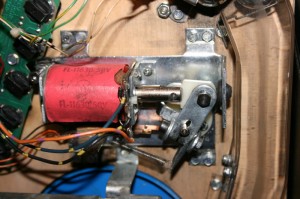
Correctly aligned crank shaft (and a very clean flipper assembly)
So did all this effort make any difference? Well all I can say is WOW! Firstly I tested the flipper with a pinball in test mode (by manually rolling a pinball down the side to the upper right flipper and activating the flipper – all from the side of the machine). Not only did the flipper seem more snappy, but it appeared to be no effort at all to shoot the pinball over the left ramp. Excellent. But what about during gameplay?
Well the first thing I noticed is that I could now get to Thing’s Mini Ramp by bouncing a pinball off the post on the right side of the staircase. Also shots to the Train Wreck actually tavelled at the speed of a train making the end plastic visibly shake (I guess some adjustment or protection will be needed here). Finally my very first direct shot to the left ramp resulted in an “air ball” with the pinball not making a complete circuit, but bouncing off the back wall of the ramp back onto the playfield instead. Not an ideal result, but maybe better than not having enough energy to make a complete circuit at all!
